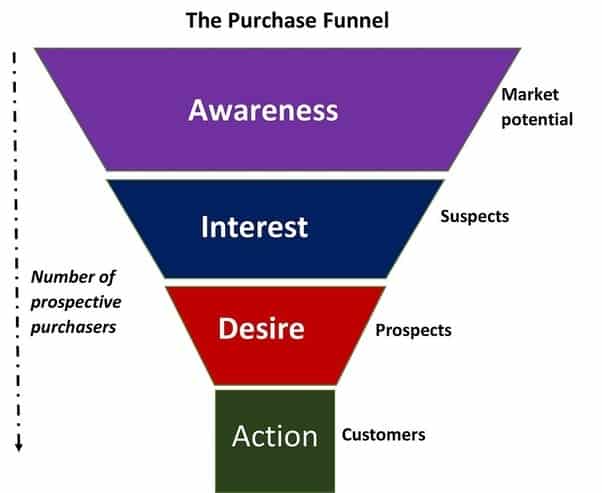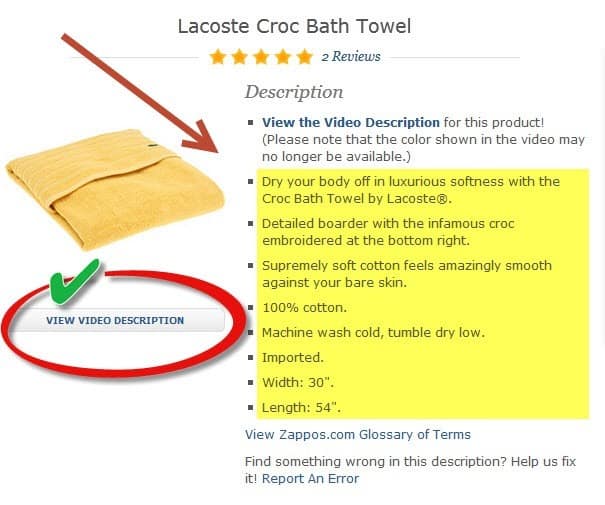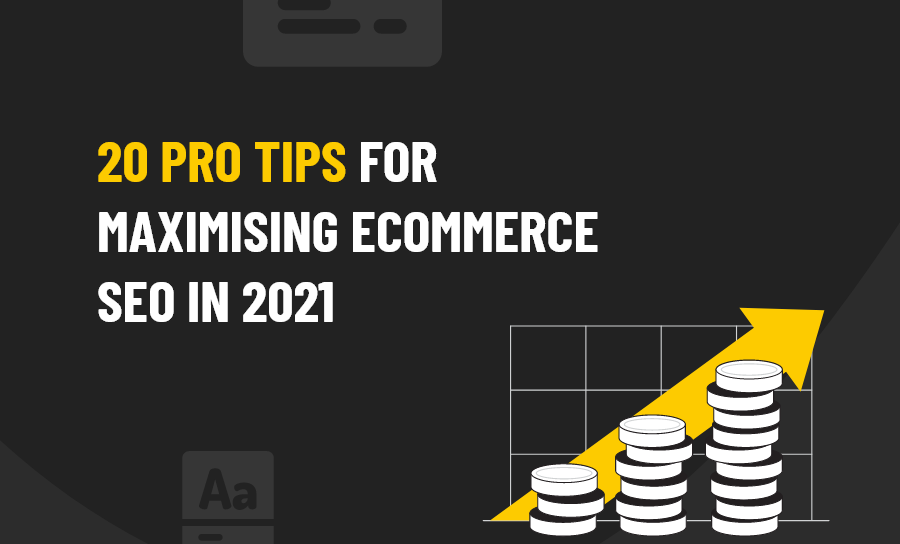Ecommerce revenue from organic traffic – and therefore, eCommerce SEO – is experiencing double-digit growth. The increasingly rising numbers are also just the beginning of the story since it only applies to last-click conversions.
There is scarce information though about the total number of people who discovered their favorite products through organic search and later converted.
However, we know that 46 per cent of product searches start with Google.
As organic SEO and sales are closely intertwined, a boost in search engine optimization is a boost in revenue. Online shopping is up, as a result of the pandemic that has coloured almost all of 2020 is likely to continue doing so in at least the early part of 2023, but that means that competition is increasing too.
Bricks and mortar retailers, including some very big name department stores, who have always seen eCommerce as secondary in the past, are now relying on it to stay afloat. For a smaller brand to compete, effective eCommerce SEO is more important than ever.
Here we are going to offer 20 effective pro SEO tips and strategies that will maximize your e-commerce revenue through effective eCommerce SEO.
1.Create More Brand Awareness By Using Non-Brand Keywords
Branded keywords are often initially better converted because these consumers are explicitly searching for your brand. However, if this is the primary goal of your eCommerce SEO approach, you will never broaden your customer base.
SEO’s beauty lies in its ability to expose the brand to new consumers looking for solutions that you deliver. As a result, you will increase your market share, and those new customers will start using branded queries. Non-branded keywords also keep you at the top of your mind for loyal consumers who can rediscover your content through an organic search.
2. Target the Entire Ecommerce SEO Conversion Funnel

Most digital marketing platforms are aimed at one of a few stages—awareness, consideration, decision-making. Social networking, for example, is strong with consumers in the research process. But the competition with others is often too great to be effective in the decision-making process. Paid search is the reverse of that. It is strong within the purchase and consideration stages, but ineffective in capturing new customers at the top of the conversion funnel.
One of the very best tips to boost e-commerce sales? Use SEO because it’s strong in all three phases. Take advantage of this and segment your keyword research for each of the three phases. What kind of searches do customers make in each phase? This would be the cornerstone of a full-funnel optimization technique.
3. Don’t Hesitate to Use Long-tail Keywords

More than half of all search queries are long-tailed keywords. So you should incorporate long-tail keywords into your eCommerce SEO marketing plan to widen your search audience and pick up low-hanging fruit.
These highly specific queries have a much lower level of competition and laser-focused intent. Develop them into your marketing strategy to broaden your network with each new piece of content you create. You’ll be on page one for thousands of unique searches before you know it.
Note: you can use SEMrush to easily find long tail keywords. It’s a paid tool (learn about SEMrush pricing here), but worth every penny because they have the largest keyword database in the world (the largest after Google’s which you can’t access anyway).
4. Capitalize On What’s Hot with Google Trends
Keyword popularity fluctuates a lot. A keyword with a high monthly search volume might already have peaked in popularity. Or on the other side of the coin, one with a low volume may be on the rise. The keyword can experience a seasonal surge that changes the way you prioritize your strategy.
Using Google Trends to add to your keyword research by uncovering secret words that many SEO tools don’t track is always a good idea in any niche, but can be especially effective for eCommerce SEO.
The tool is a window to what’s hot, too. Using the “Related Queries” function to access searches relevant to your goods and services. When you see a pattern, take advantage of it! Write tailored content relative to the pattern your audience would find useful. This keeps your content ahead of many rivals and lets you tap into lucrative keyword opportunities before they catch up.
5. Meet Customers Where They’re At
The hallmark of the best eCommerce SEO is that when your audience is searching for a solution, you’re ready to provide that solution exactly when they want it. Don’t try to disrupt their social media feed or send them an ad when they’re involved in something else. They’re not listening at that moment, and they won’t remember you later. Yeah, that’s massive.
Meeting customers where they’re at isn’t just about turning up in Google’s key results, though. It means being on YouTube, featured in blogs, podcasts, website reviews, etc.—wherever your customers are, that’s where you should be.
6. Retarget Organic Traffic with Paid Ads
The truth is, meeting your customers where they are means that you’re going to meet them plenty of times before they’re ready to convert. Stay top of mind with these warm leads with re-targeting advertising. Remarketing is an easy and productive way to draw on all of your organic traffic by keeping your leads in the funnel.
Match your remarketing campaigns to each stage of the funnel. When someone searches and lands on one of your sites, launch an ad that invites the customer to proceed to the next logical level. After launching your ad, measure its efficiency with ROAS to ACoS calculator and improve your advertising strategies.
7. Optimize for ALL Handheld Devices

If your website is not mobile-friendly, Google will not give priority to the results of a mobile search. We’ve known this for years now, and most big brands and business eCommerce stores have already moved to effective, responsive website designs a long time ago.
The issue is that responsive and mobile-optimized are not the same thing. A website with a beautiful responsive design could also contain a plethora of non-mobile-optimized features, from custom code to huge slow to load product photographs and ineffective CTAs. And Google won’t necessarily capture every in-page feature when it gives your website the green light – or the red light – for mobile SERPs.
Once you check that your website is generally performing OK using a method like Google’s mobile-friendly test, re-assess your website from a user point of view.
- Is your home page persuasive and quick to use?
What do you look at your blog posts? Do you break up text walls with images?
Do you give priority to the right information?
Is your mobile website moving at lightning speed (it needs to, mobile searchers are the most impatient of all)
Do you have rich snippets and AMP pages along with your other schema markup?
Does the user have a simple way to fill out the form? To save the stuff for later? Have you got a way to re-engage with them?
Take a look at Google Analytics. Are your smartphone and desktop conversion rates are comparable?
Sixty per cent (60 per cent) of all internet searches are made using a mobile device, so don’t miss a single chance to turn your mobile organic traffic into mobile sales.
8. Add Copy to Your E-commerce Category and Product Pages
Product pages capture mainly long-tail traffic: searchers that land there have high specificity and purpose, but can be relatively limited in number. Your home page captures traffic for the widest variety of searches, attracting a higher number of shoppers with a lower overall purchase goal.
The Goldilocks pages are your eCommerce category and product pages. They are unique enough to be intent-focused, but expansive enough to draw large amounts of new shoppers through non-branded keywords.
The keywords that fit the importance of the category pages can be the best keywords in your arsenal—if you completely optimize each page. Add helpful, keyword-rich copy to each category page to optimize their ranking chances for these high-priority keywords.
9. Make your Product Pages Shine
Since some of your lowest organic traffic would go straight to your product sites, invest in e-commerce conversion rate optimization. Display each product at different angles. Show videos of the product in use, being worn etc. Make use of beautiful graphics that set the scene: who uses your product? What is their lifestyle like? What are the ideals that they embody?

When determining how to maximize your e-commerce sales through your product descriptions, don’t just give new customers your sales pitch. Offer them all the details they need to make their decisions. Prevent any objections that people may make against purchasing a product and answer their questions. Not only can this information support the buying decision; it can also improve the ranking of the eCommerce product page for the appropriate search words.
The results may contain considerably more detail than the two paragraphs of the sparkling copy you want on the product landing page. This isn’t a problem—just leave your featured copy where it is and test different configurations for your secondary copy. Add it below the product or create an editorial spread that pushes the user through additional details as they scroll. This way, you can increase your sales and also encourage the users to participate in your customer referral program and recommend your product to their friends.
10. Use Properly Implement Faceted Navigation
Faceted navigation is a sort/filter feature that helps consumers narrow down the product category by hyper-specific criteria. It’s perfect for consumers. It’s also not a secret that facet search will produce an SEO nightmare if it’s implemented incorrectly. Since any combination of facets produces a unique URL, websites will end up with an almost infinite amount of redundant content that drags priority pages down and confuses search engines.
Issue solutions vary from canonization to the deletion of such URL parameters in robots.txt to the implementation of JavaScript that does not rewrite the URL. Each solution has its pros and cons; the important thing is to prioritize the solution. Otherwise, you would needlessly sacrifice SEO for usability.
11.Use Internal Linking for Ecommerce SEO Strategically
Do a lot of internal linking for your eCommerce website. They set up a better SEO site infrastructure, distribute link equity between various pages, and seamlessly guide visitors to other priority pages on your website.
Set up a clear internal link structure that highlights the pillar pages and helps crawlers (and people) find products or content that are important to the context.
For content creation, build best practices that set up internal links as par for the course: if someone writes a blog post, for example, connect them to similar content in each post.
12. Add Structured Data
In 2023, more than half of all searches are zero-click, which means searches where people do not leave SERPs to find the information they need. So today, a well-rounded SEO approach focuses on SEO website optimization and SERP optimization.
Use structured data markup to stand out in the SERPs and to highlight details on your site that will make users want to click. Although it’s not currently a ranking signal, standardized data increases exposure and lets people discover early on in their decision process that your platform has the goods and solutions they want.
Product markups and review markups are an especially high priority for eCommerce firms. If you do SEO for local brick-and-mortars, add the place markup. View the Google Search Gallery to find additional forms of structured data that suit your industry.
When you do, take note of your competition’s use of standardized data and make sure yours remains up to date. Tools such as DeepCrawl and Screaming Frog can retrieve this information from competitor websites, or you can look at SERPs for help and even for unique keywords, you may be able to target too.
13. Improving the customer experience
There is a cyclical relationship between SEO and customer experience. Improving user experience also improves SEO efficiency. Link users to appropriate, purposeful content that is consistent with their search intent. At its heart, Google is dedicated to serving the most helpful pages available for any particular query.
The more you can keep your audience involved in the customer experience, the better. Make your eCommerce website easy to navigate. Go beyond and beyond to have all the information people need right at their fingertips.
Include convincing, quality content that satisfies your users search intents. Eliminate broken links and site errors. Give people a simple way to get in touch with an excellent support team. Don’t stop at onsite support either. Get a virtual phone number system and offer (good old-fashioned) telephone support as well. Google is going to love you for it, and so are your clients. What’s more, they’ll keep coming back for more, increasing the worth of your customer’s lifetime (CLV)!
14. Boost Page Loading Time
The slower your site, the more profit down the drain. If it takes longer than three seconds to load a page, more than half of your customers will leave the site. The correlation between page speed and user behavior is so well known that Google uses page speed as a ranking signal for both desktop and mobile rankings.
Using a Pingdom method to monitor the speed of your site and incorporate any suggested improvements. The financial and organic disparity between a slow location and a quick one is profound.
15. Build a Faster Check-out Method
Complex checkout procedures are also another key culprit in the abandonment of the shopping cart.
How much do abandoned carts have an effect on e-commerce sales? Try the trillions of dollars per year. What’s more, 63% of that can be recovered.
When determining how to maximise e-commerce sales, avoid being part of the bad statistics by making the checkout page as fast and uncomplicated as possible. Don’t ask people for information unless it is absolutely necessary, and let them save their information for future use. Your profits and SEO will benefit from a quick, easy check out experience no matter what you sell.
16. Offer Rewards for Consumer Reviews

Online reviews are very relevant for the results of branded search. Branded keywords are That’s because customers are looking specifically for your business. However, if your search results contain negative feedback, those complaints could push away conversion-ready customers. It is therefore important to collect honest, constructive feedback and encourage it through online reputation management.
Unfortunately, satisfied consumers won’t always be inspired to leave a review or rating without a call to action. One way to persuade them to do so is to offer incentives for product feedback and reviews.
Prevent any allegations of bribery by providing the same discount on every unbiased review, either positive or negative, and by offering it to any customer. If you’ve mostly satisfied customers, your reviews will show that. If not, you have a bigger problem that you’ll need to address and that SEO may not be able to help you with.
17. Encourage User Generated Content

UGC lets your eCommerce site rank for fresh new content and long-tail keywords and creates social evidence by showing how loyal customers use and enjoy your products. If your best UGC exists on social media, link it creatively to your eCommerce website to make the most of its SEO potential.
Write keyword-rich blog posts that round up the top customer images of the week, for example. You can also create community forums on your own website and promote conversation, becoming a platform for industry-related content and activities and boosting your reputation as industry experts and your SEO.
18. Use A/B Testing and Behaviour Analysis
Since it includes checking near-duplicates of a page, there has been some doubt about A/B testing and its effect on SEO. Rest assured, Google is promoting A/B testing. Tools such as Omniconvert, Optimizely, AB Tasty, VWO, and Adobe Target are some of the best enterprise-level A/B testing tools out there.
Behavior-monitoring techniques such as A/B testing and behavioral analysis enable you to provide your consumers with an increasingly better experience through iterative testing. The results will not only have SEO benefits; you will also see a rise in revenue.
19. Get Creative with Ecommerce SEO
SEO is profoundly dedicated to great content and outstanding customer service. Outside of your main technological optimizations, you have full freedom to determine how to answer the following questions:
What kind of content do our customers find exciting, useful and informative?
How do we go above and beyond to delight our customers?
How are we going to be featured in the news and create buzz?
Get creative here! When determining how to maximize e-commerce revenue, pursue various content formats and actually have fun with the material you make. Devote 80 per cent of your SEO and content capital to tried and tested approaches that work, and use the remaining 20 per cent to experiment: test a theory, try a new content type, market a new buyer persona.
When you broaden your horizons with a more innovative approach, you can find insights into what your audience enjoys. And recognizing that this is the secret to unlocking eCommerce SEO excellence and driving online sales.
20. Get Ecommerce SEO Help When You Need It
Setting up and maintaining a successful eCommerce site eats up a lot of time. A successful SEO campaign eats up a lot of time. You only have 24 hours in a day, and you do need to sleep. There is no shame – and an awful lot to gain – in getting help with your eCommerce SEO.
Ready to discover what Pearl Lemon’s eCommerce SEO team can do for you? Contact us today, and let’s talk about it.








